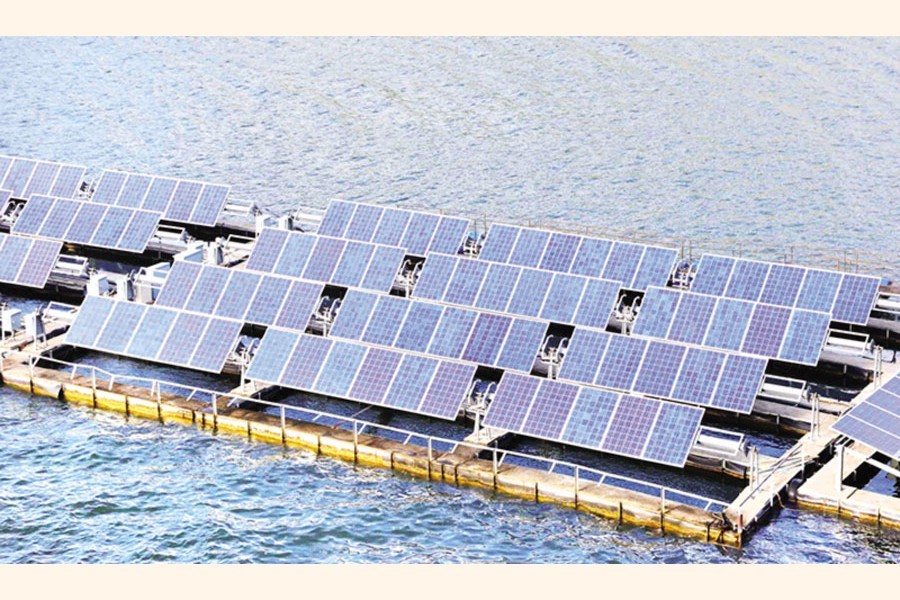
Published :
Updated :

The Asian Development Bank (ADB) has found three suitable sites for floating solar power plants which, once installed, will be able to generate a total of 61-megawatt electricity.
Officials said Barapukuria pit lakes in Dinajpur would be able to host a 45.9MW plant, Jhenidah's Joydia baor (lake) a 9.1MW plant and Jashore's Bukbhara baor a 6.0MW plant.
The ADB has recently submitted a report of its feasibility study on these sites to the Sustainable and Renewable Energy Development Authority (SREDA).
For solar power plants, according to SREDA chairman Mohammad Alauddin, the main challenges lie with the acquisition of land.
"Since the area of Barapukuria pit lakes belongs to the coalmine company, here the land is ensured."
Mr Alauddin said the Barapukuria site is thus most feasible for setting up a floating solar power plant.
"We should start in such a location where our success is guaranteed," he told the FE.
Mr Alauddin has invited coalmine officials to discuss issues like the company's likelihood for funding the project since it can be a profit-making venture.
Otherwise, the company can seek funds from other local or foreign sources, he said.
According to the study, the coalmine lakes were formed in 2011 due to subsidence from underground long wall mining and have been growing since.
During wet season, the northern lake has a surface area of around 46 hectares and the south-western lake an area of nearly 20 hectares.
The study suggested that electricity generation in the lakes combine with aquaculture to promote the dual use of water systems.
"Commercial fisheries integrated with floating photovoltaic farms can provide sustainable sources of both food and power in locations where population density is high and land availability competitive."
Joydia baor is an oxbow lake and it has a crescent shape. It is nearly 6.0 kilometres long with 250-400 metres wide, according to the report.
The lake is widely used for washing and bathing by many in the wider lakeside community and people also use the water for cooking and washing clothes.
One of the larger lakes in Jashore, Bukbhara baor has a surface area of nearly 153 hectares during wet season and it reduces to around 105 hectares in dry season.
The lake is mainly used for commercial fishing in addition to irrigation of croplands, jute retting, washing, bathing and cooking water.
In Bangladesh, only one floating solar plant with 10-kilowatt capacity is so far piloted by Solar EPC Development Ltd in a pond of the Mongla municipality.
The establishment of a 10MW floating solar facility in the pond is awaiting approval.
Earlier, the government also planned to set up another such plant at Kaptai lake in Rangamati district.
Work is underway to resolve concerns over environmental aspects of the setting up of the plant.
Solar EPC along with its partners last year expressed interest to lease out the abandoned pit lakes of the coalmine to build the facility there.
Company managing director Ezaz Al Qudrat A Mazid told the FE on Tuesday that the lakes have immense potential to set up a utility-scale floating solar power plant.
This week, his company signed a power purchase agreement with Khulna City Corporation to set up a 1.0MW grid-tied floating solar power plant in Shaheed Hadis Park Lake.
Mr Mazid said his company is also selected for engineering, procurement and construction contracts of another 2.0MW plant in the municipality pond.
The project will be financed by the Indian government's Small Development Project (SDP).
Presently, some 730.49MW power is produced from renewable sources in the country.


 For all latest news, follow The Financial Express Google News channel.
For all latest news, follow The Financial Express Google News channel.